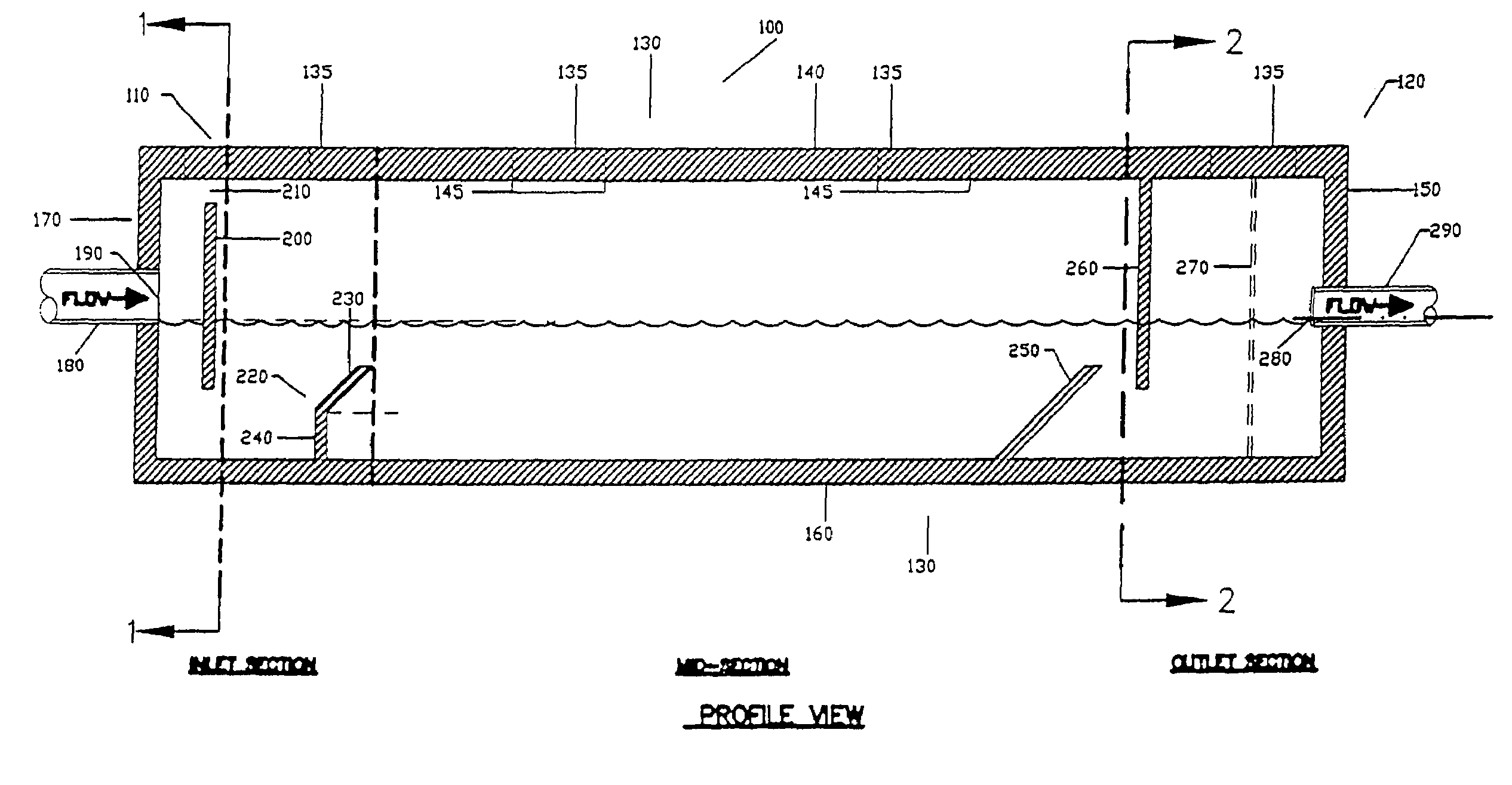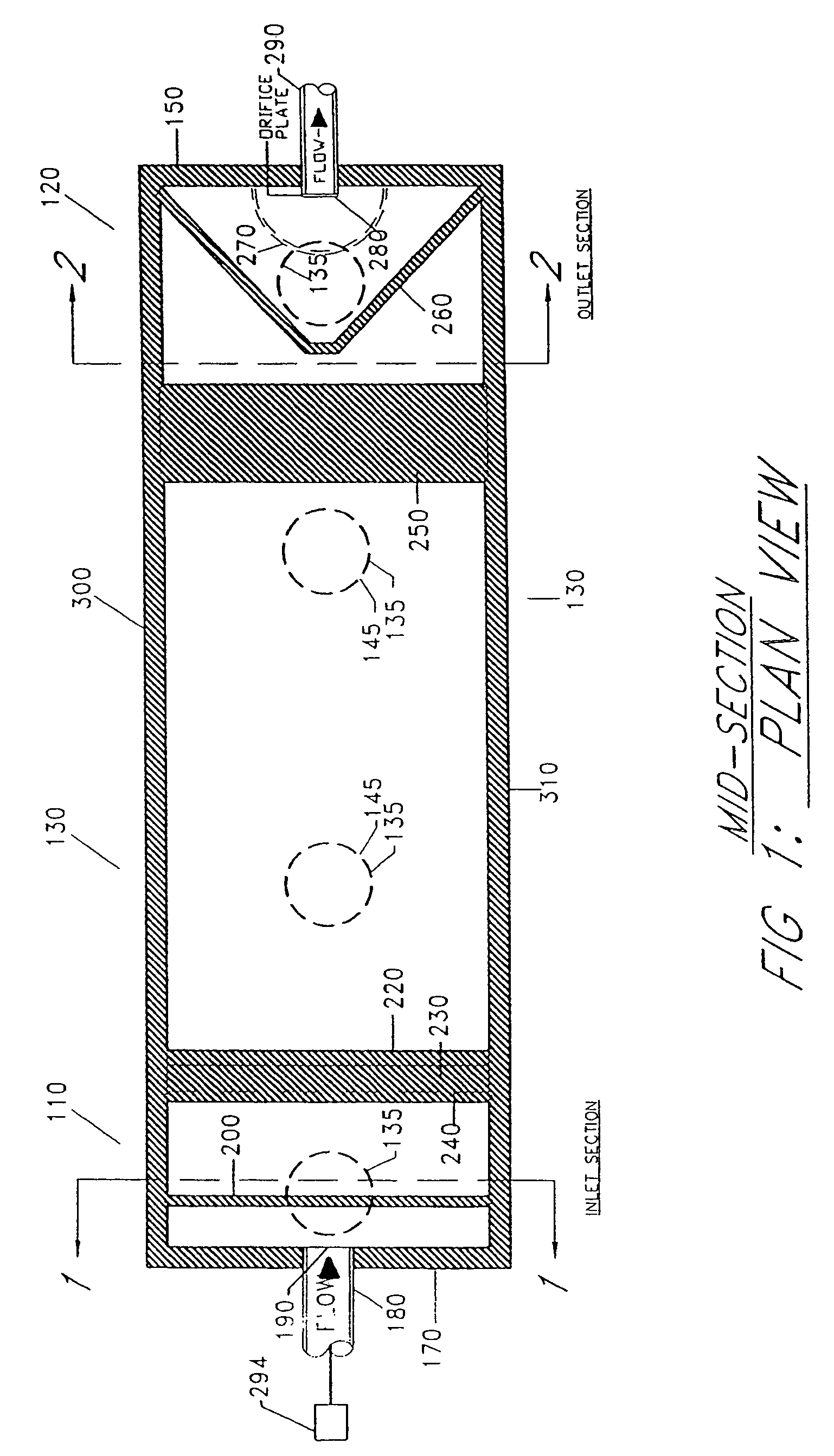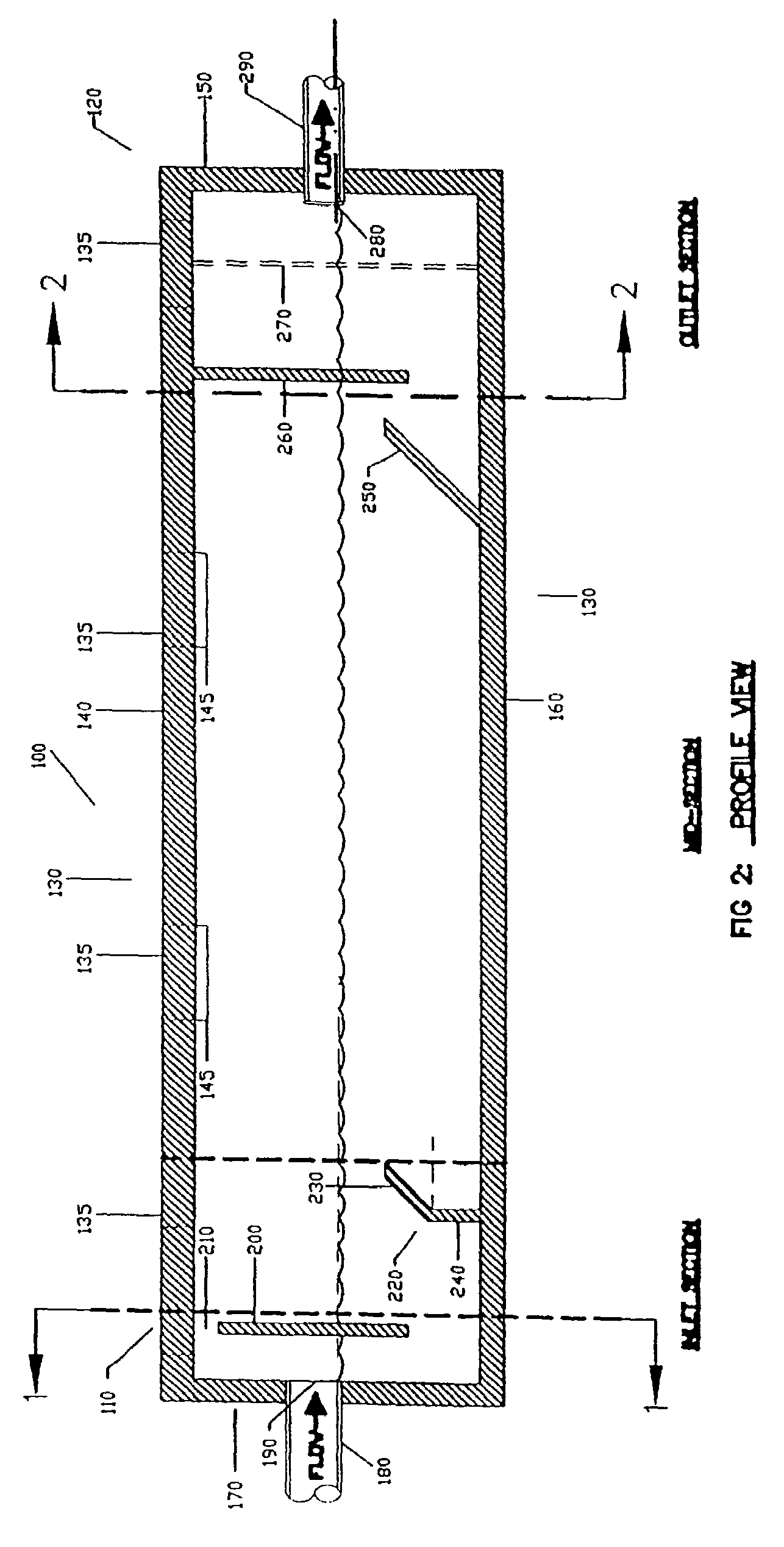Stormwater treatment apparatus and method
a treatment apparatus and a technology for stormwater, applied in sedimentation settling tanks, separation processes, filtration separation, etc., can solve the problems of high property values, soil conditions, and the proximity of other building foundations that often preclude the use of conventional, space-intensive stormwater bmp's such as detention ponds, and the effectiveness of these devices for removing suspended solids and oil and grease has been marginal
- Summary
- Abstract
- Description
- Claims
- Application Information
AI Technical Summary
Benefits of technology
Problems solved by technology
Method used
Image
Examples
Embodiment Construction
[0093]The drawings illustrate one embodiment of an apparatus 100 for separation of pollutants that are less and more dense than water from stormwater runoff. Referring to FIG. 1 and FIG. 2, the apparatus 100 consists of a top 140, a bottom 160, an inlet end 170, an outlet end 150, a left side 300, and a right side 310 (left and right are relative to the view from the inlet end 170 to the outlet end 150). These sides define a rectangular chamber with an inlet section 110, an outlet section 120, and one or more midsections 130.
[0094]The length of the most basic configuration of the apparatus 100 is desirably at most 20 ft, more desirably at most 18 ft 6 in, and, most preferably, 17 ft 6 in (inside dimension); and the width of the apparatus id desirably at most 10 ft, more desirably at most 8 ft 6 in, and, most preferably, 7 ft 6 in (inside dimension); the height of the apparatus is 6 ft or 8 ft (inside dimensions). Outside dimensions and inside dimensions may vary due to structural st...
PUM
 Login to View More
Login to View More Abstract
Description
Claims
Application Information
 Login to View More
Login to View More - R&D
- Intellectual Property
- Life Sciences
- Materials
- Tech Scout
- Unparalleled Data Quality
- Higher Quality Content
- 60% Fewer Hallucinations
Browse by: Latest US Patents, China's latest patents, Technical Efficacy Thesaurus, Application Domain, Technology Topic, Popular Technical Reports.
© 2025 PatSnap. All rights reserved.Legal|Privacy policy|Modern Slavery Act Transparency Statement|Sitemap|About US| Contact US: help@patsnap.com



